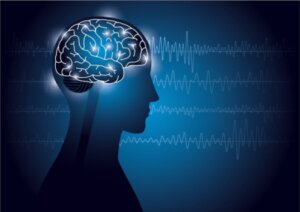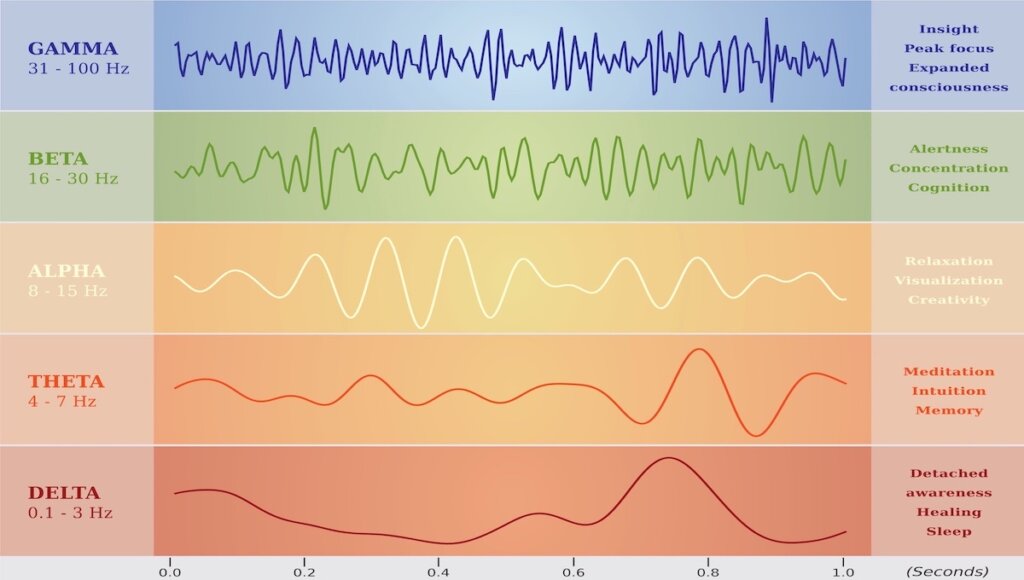Alpha-Theta Neurofeedback Training for Treating PTSD


Written and verified by the psychologist Gorka Jiménez Pajares
Alpha-Theta neurofeedback training is an intervention with the potential to help a multitude of patients. In fact, it’s used successfully for treating various clinical disorders, such as depression and ADHD. However, today we’re going to focus on its benefits in dealing with post-traumatic stress disorder (PTSD).
According to the American Psychiatric Association, PTSD characterizes an individual who develops severe symptoms after having directly or indirectly witnessed an event that endangered their life. For example, a terrorist attack or a heart attack. Symptoms include re-experiencing the event and also hyperarousal (APA, 2015).
“Neurofeedback trains the brain to produce a calm state.”
-Sima Noohi-
After trauma, the body becomes hypersensitized
For victims of psychological trauma, their bodies cease to belong to them. Even in the face of harmless stimuli, such as an elevator, a mirror, a vegetable, or a sound, they experience extraordinarily high activation. This occurs because the aforementioned stimuli are associated with a specific message, that of danger.
We’ll explain it with a clinical case. Eleanor is a patient who started therapy two months ago because she was having nightmares every night about her mother, who suffers from alcoholism. Eleanor works in the hotel business and says that every time she opens a bottle of wine and pours it out for a customer, she starts to feel afraid.
Although Eleanor has lived away from her mother for years, the sound of the wine pouring makes her panic. Consequently, she runs away. For this reason, her referring doctor discharged her and recommended that she see a mental health professional. This is an example of how a sound (the ‘glub glub glub’ of wine coming out of the bottle) leads to an emotional cascade of panic and anguish. In this case, it evokes the years when Eleanor’s mother mistreated her.
“Healing comes from restoring the ability to feel the fullness and vitality of life.”
-Bessel van der Kolk-

Alpha-Theta neurofeedback training: a way to reset the brain
Trauma produces changes in the brain. For example, the adreno-pituitary-hypothalamic axis tends to lose its balancing ability (Carrobles et al., 2014). This increases basal levels of cortisol (the stress molecule) which, in turn, damages important brain structures such as the hippocampus.
The right hemisphere of the brain houses neurological centers associated with the emotional universe. After the traumatic event, many victims present an excess activation in these areas of their brains. It happens when they perceive stimuli that are related to the events they witnessed, as in the case of Eleanor.
Consequently, the trauma sufferer experiences an elevation in arousal. The responses dependent on the autonomic nervous system (such as breathing or heart rate) increase due to sounds, colors, and smells that were associated with the trauma. This gives sufferers the message that their life is, once again in danger and they must escape.
Trauma affects neuroelectrical functioning
There are various types of bioelectric waves at the brain level. In the context of PTSD, a decompensation of two, in particular, has been identified (van der Kolk, 2020):
Alpha waves are those that arise from states of relaxation. When we feel safe, comfortable, and carefree, our brains begin to produce these types of waves. An alteration in the presentation of these waves is far from exclusive to PTSD. In fact, they’ve also been found at altered levels in individuals with literacy difficulties (Sciotto et al., 2018).
Theta waves are related to deep introspective states. They occur when we’re deeply focused or when we’re experiencing fantasies or feeling creative. As in the previous case, the alteration of these waves also occurs in other clinical disorders. In this instance, autism.
“When theta waves predominate in the brain, the mind focuses on the inner world; while alpha waves can act as a bridge from the external to the internal world, and vice versa.”
-Bessel van der Kolk-
Neurofeedback is performed using a device that records the prevailing waves in the individual. Then, thanks to processing by computer equipment, the number of recorded waves is transformed and they become a stimulus, such as sound or light.
The individual must learn to modulate the frequency and intensity with which these brain waves emerge through their own will, with the help of said stimuli.

The Alpha-Theta neurofeedback training protocol
The intervention is applied when the individual is relaxed. The objective is to increase the percentage of theta waves that they experience in two fields: the medial area and the frontal region. It’s based on the percentage of alpha waves (Noohi et al., 2017).
This objective is based on the fact that, in PTSD, people present a greater intensity and frequency of alpha waves than theta waves. It seeks to achieve a balance between the two, through the procedure explained above.
Alpha-Theta neurofeedback training is a treatment supported by scientific evidence. In fact, the American Psychiatric Association listed it as one of the recommended interventions for PTSD, due to its potential benefits.
As we mentioned earlier, this treatment contributes to the restoration of the bioelectrical functioning of some regions of the brain. Consequently, it reduces the hyperactivation experienced by trauma sufferers.
“Since at the time of dominance of theta waves, the person experiences relaxation, it is easier to rebuild the internal world in a more positive way.”
-Sima Noohi-
Alpha-Theta neurofeedback training is an intervention with the potential to help a multitude of patients. In fact, it’s used successfully for treating various clinical disorders, such as depression and ADHD. However, today we’re going to focus on its benefits in dealing with post-traumatic stress disorder (PTSD).
According to the American Psychiatric Association, PTSD characterizes an individual who develops severe symptoms after having directly or indirectly witnessed an event that endangered their life. For example, a terrorist attack or a heart attack. Symptoms include re-experiencing the event and also hyperarousal (APA, 2015).
“Neurofeedback trains the brain to produce a calm state.”
-Sima Noohi-
After trauma, the body becomes hypersensitized
For victims of psychological trauma, their bodies cease to belong to them. Even in the face of harmless stimuli, such as an elevator, a mirror, a vegetable, or a sound, they experience extraordinarily high activation. This occurs because the aforementioned stimuli are associated with a specific message, that of danger.
We’ll explain it with a clinical case. Eleanor is a patient who started therapy two months ago because she was having nightmares every night about her mother, who suffers from alcoholism. Eleanor works in the hotel business and says that every time she opens a bottle of wine and pours it out for a customer, she starts to feel afraid.
Although Eleanor has lived away from her mother for years, the sound of the wine pouring makes her panic. Consequently, she runs away. For this reason, her referring doctor discharged her and recommended that she see a mental health professional. This is an example of how a sound (the ‘glub glub glub’ of wine coming out of the bottle) leads to an emotional cascade of panic and anguish. In this case, it evokes the years when Eleanor’s mother mistreated her.
“Healing comes from restoring the ability to feel the fullness and vitality of life.”
-Bessel van der Kolk-

Alpha-Theta neurofeedback training: a way to reset the brain
Trauma produces changes in the brain. For example, the adreno-pituitary-hypothalamic axis tends to lose its balancing ability (Carrobles et al., 2014). This increases basal levels of cortisol (the stress molecule) which, in turn, damages important brain structures such as the hippocampus.
The right hemisphere of the brain houses neurological centers associated with the emotional universe. After the traumatic event, many victims present an excess activation in these areas of their brains. It happens when they perceive stimuli that are related to the events they witnessed, as in the case of Eleanor.
Consequently, the trauma sufferer experiences an elevation in arousal. The responses dependent on the autonomic nervous system (such as breathing or heart rate) increase due to sounds, colors, and smells that were associated with the trauma. This gives sufferers the message that their life is, once again in danger and they must escape.
Trauma affects neuroelectrical functioning
There are various types of bioelectric waves at the brain level. In the context of PTSD, a decompensation of two, in particular, has been identified (van der Kolk, 2020):
Alpha waves are those that arise from states of relaxation. When we feel safe, comfortable, and carefree, our brains begin to produce these types of waves. An alteration in the presentation of these waves is far from exclusive to PTSD. In fact, they’ve also been found at altered levels in individuals with literacy difficulties (Sciotto et al., 2018).
Theta waves are related to deep introspective states. They occur when we’re deeply focused or when we’re experiencing fantasies or feeling creative. As in the previous case, the alteration of these waves also occurs in other clinical disorders. In this instance, autism.
“When theta waves predominate in the brain, the mind focuses on the inner world; while alpha waves can act as a bridge from the external to the internal world, and vice versa.”
-Bessel van der Kolk-
Neurofeedback is performed using a device that records the prevailing waves in the individual. Then, thanks to processing by computer equipment, the number of recorded waves is transformed and they become a stimulus, such as sound or light.
The individual must learn to modulate the frequency and intensity with which these brain waves emerge through their own will, with the help of said stimuli.

The Alpha-Theta neurofeedback training protocol
The intervention is applied when the individual is relaxed. The objective is to increase the percentage of theta waves that they experience in two fields: the medial area and the frontal region. It’s based on the percentage of alpha waves (Noohi et al., 2017).
This objective is based on the fact that, in PTSD, people present a greater intensity and frequency of alpha waves than theta waves. It seeks to achieve a balance between the two, through the procedure explained above.
Alpha-Theta neurofeedback training is a treatment supported by scientific evidence. In fact, the American Psychiatric Association listed it as one of the recommended interventions for PTSD, due to its potential benefits.
As we mentioned earlier, this treatment contributes to the restoration of the bioelectrical functioning of some regions of the brain. Consequently, it reduces the hyperactivation experienced by trauma sufferers.
“Since at the time of dominance of theta waves, the person experiences relaxation, it is easier to rebuild the internal world in a more positive way.”
-Sima Noohi-
All cited sources were thoroughly reviewed by our team to ensure their quality, reliability, currency, and validity. The bibliography of this article was considered reliable and of academic or scientific accuracy.
- Álvarez Domínguez, F. (2020). Clasificación con redes neuronales de actividades mediante el estudio de las ondas cerebrales.
- American Psychiatric Association. (2014). DSM-5. Guía de consulta de los criterios diagnósticos del DSM-5: DSM-5®. Spanish Edition of the Desk Reference to the Diagnostic Criteria From DSM-5® (1.a ed.). Editorial Médica Panamericana.
-
Belloch, S. A. /. (2020). Manual De Psicopatologia, Vol I.
- Carrobles, J. A. S. (2014). Manual de psicopatología y trastornos psicológicos (2a). Ediciones Pirámide.
- Van der Kolk, B. A., & Van der Kolk, B. A. (2020). El Cuerpo Lleva la Cuenta: Cerebro, Mente Y Cuerpo en la Superación Del Trauma. Alianza Editorial.White, N. E. (1999). Theories of the effectiveness of alpha-theta training for multiple disorders. In Introduction to quantitative EEG and neurofeedback (pp. 341-367). Academic Press.
This text is provided for informational purposes only and does not replace consultation with a professional. If in doubt, consult your specialist.







